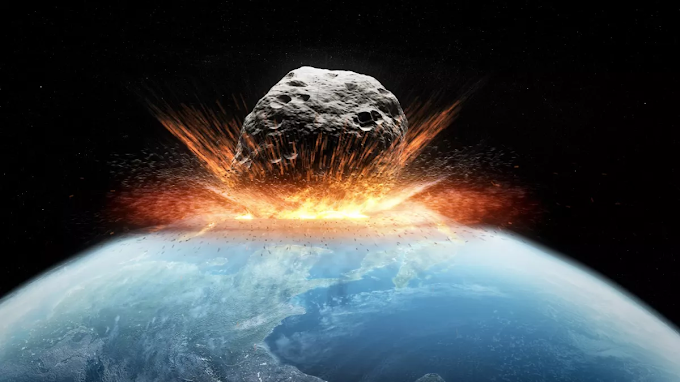When NASA's Double Asteroid Redirection Test (DART) slams into the tiny asteroid Dimorphos, it will be our first attempt to demonstrate our ability to deflect dangerous incoming asteroids.
For decades, scientists around the world have been scanning the sky, searching for potentially hazardous asteroids in the vicinity of Earth. And as astronomers discover near-Earth asteroids in ever greater numbers, attention is now turning toward how we might protect Earth should an asteroid on a collision course be discovered. One technique is brute force, and to test it, DART will collide with the 560-foot-wide (170 m) Dimorphos at 7:14 p.m. EDT (2314 GMT) on Sept. 26.
Dimorphos is a member of a binary system with another asteroid, the 2,600-foot-wide (780 m) Didymos, making it the ideal target with which to measure our deflection capabilities. DART's so-called "kinetic impact" will alter Dimorphos' orbit around Didymos, and because the two rocks are gravitationally bound, there's no chance that the impact could send Dimorphos accidentally careening across space.
Alternatively, the thrust from an ion engine could also nudge a small asteroid away from Earth. Or solar reflectors placed on the surface of an asteroid could use sunlight to push the space rock away.
"There are lots of ideas out there," Johnson said.
However, while these methods of deflection should work for smaller, Dimorphos-scale asteroids, shifting larger asteroids will require a bigger punch. Being able to deflect an asteroid 0.6 miles wide (1 kilometer) would "be the dream," according to Patrick Michel, a scientist at the French National Center for Scientific Research (CNRS) and the principal investigator on the Hera mission.
But he's dubious that we could deflect such a large asteroid using just a kinetic impactor. "I don't think that would work because it's too big," he told Space.com.
So what might work against a larger asteroid? "We have a threshold in size where we have to mention the 'bad word': nuclear," Michel said. "So much energy would be needed to move a kilometer-sized asteroid that only a nuclear device can provide it. The good thing is that we know almost all the 1-kilometer objects and none are threatening to us, at least over the next century."
In theory that gives us time, although it is possible that an asteroid could still be discovered on a collision course, given that there are still significant numbers of these space rocks to find.
Astronomers predict that there are about 25,000 sizable objects that cross Earth's orbit. Of those larger than 0.6 miles (1 kilometer) in diameter that could threaten civilization if they impacted, about 97% have been discovered. For smaller ones, 460 feet (140 meters) across or larger and that could do significant regional damage should they collide with Earth, an estimated 42% have been found so far. None have been found to be on a collision course with Earth, at least not in the next century or so.
The experiment marks a change of pace for NASA, which has to date focused its spacecraft on science. However, according to Lindley Johnson, the director of NASA's Planetary Defense Coordination Office, the DART mission does not signify a change in policy of thinking about hazardous objects, but rather a continuation of the work done so far.
"Our charter from the beginning has been not only to find asteroids, but to work on the technology and techniques that can be used to deflect an asteroid from an impact trajectory, should we ever find one," he told Space.com. "DART is just a first test in what we see as an ongoing program."
DART's roots go back 20 years, to when scientists at the European Space Agency considered a kinetic impactor mission called 'Don Quijote' (named after the eponymous knight in the famous Spanish novel). Although that particular mission never came to pass, in 2011, representatives from NASA and ESA discussed a potential joint deflection mission called AIM (Asteroid Impact Mission). That evolved into two independent but connected missions: DART and the European Space Agency's Hera mission, which will follow up on DART, visiting Didymos and Dimorphos in 2026 to view the aftermath of the impact and conduct a scientific study of the double-asteroid system.
Should DART prove successful, planetary scientists view it as just the beginning of our efforts to learn how to defend Earth from hazardous asteroids.
"We'll certainly look to do tests in the future, whether it's against a different type of asteroid, or to test another technique, such as a gravity tractor," Johnson said. A gravity tractor involves parking a large spacecraft next to an asteroid. The spacecraft, though small compared to the asteroid, would have enough gravity to pull the asteroid toward it. Firing an ion engine, the tractor would in theory be able to pull the asteroid away from a collision course with Earth.










